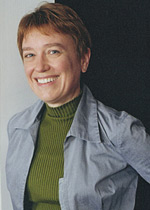
In her professional career, Gilman is a historian specializing in 18th and early 19th-century North American history, particularly frontier and Native history. In 1992 she was a finalist for the Nebula Award for her novella, “The Honeycrafters.” Her fiction has been translated into Italian, Russian, German, Czech and Romanian. Her short fiction has appeared in magazines and anthologies such as F&SF, Bending the Landscape, The Year’s Best Science Fiction, Realms of Fantasy, The Best From Fantasy & Science Fiction, Interzone, Universe, Full Spectrum, and others. Her first novel, Halfway Human, published by Avon/Eos in 1998, was called “one of the most compelling explorations of gender and power in recent SF” by Locus magazine. Her name was written on the back.Carolyn Ives Gilman has been publishing science fiction and fantasy for almost twenty years. You probably want to speak to our ethnographic curator, Magister Hess. I think they may have called the wrong person, she said. I was sent by the Whispering Kindom of the Manhu. He looked at the floor, as if at a loss for words. Rue had no idea what he was talking about, but it seemed the polite thing to say. My name is Traversed Bridge, he said then, apologetically, I have an unreal name as well, if you would prefer to use that. When she held out her hand, the young man stared at it for a second before remembering what to do with it.

His hands were in the pockets of a jacket much too light for the weather outside. He stood out for his stillness in the bustle of departing visitors-tall and slim, with long black hair pulled back in a tie. Emerging into the airy, sophisticated architecture of the lobby was a release from claustrophobia. Exposed conduits and plumbing ran along the ceiling above her as she paced down the scuffed-tile corridor lined with crates and display cases no one wanted to throw away. The parts of the museum beyond the public gallerieswere cluttered and utilitarian. But the book was disappointing-simplistic ideas gussied up in jargon-and she needed a break. There is a gentleman here asking to see you, the guard at the front desk said. Ruewas at her desk,reading a new art history treatise she needed to review, when her wristband chimed. The windows had been rain-streaked all day, and nowhad gone dark.

The series of events that would make Rue Savenga the most reviled woman on Sarona began only minutes before closing time at the Orofino Museum.


 0 kommentar(er)
0 kommentar(er)
